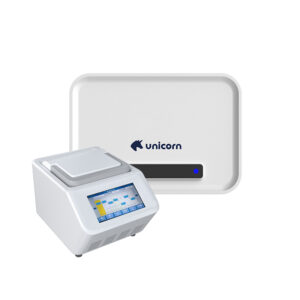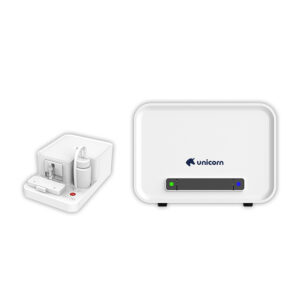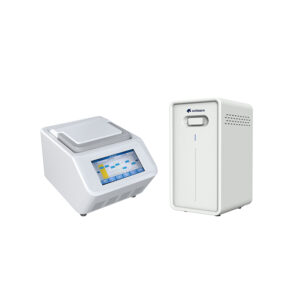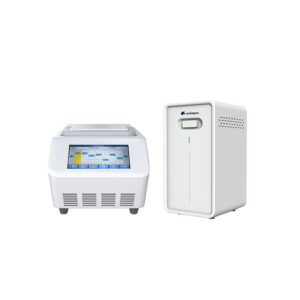Pathogen Infection
Pathogen detection is very important for the prevention, diagnosis and treatment of diseases caused by pathogenic microorganisms. The detection objects mainly include pathogenic bacteria, fungi, parasites and viruses. Traditional biochemical or immunological diagnostic methods are generally accurate and prone to errors Judgment and missed detection. Molecular diagnostic methods have become the gold standard for identification of pathogenic microorganisms due to their accurate detection, strong specificity and short cycle time. As the third-generation PCR technology, digital PCR has unique advantages in the field of pathogen detection by virtue of its extremely high detection sensitivity and absolute quantitative characteristics.
Novel Coronavirus Disease 2019 (COVID-19), referred to as “New Coronary Pneumonia”, was named “2019 Coronavirus Disease” by the World Health Organization. Reverse transcription quantitative polymerase chain reaction (RT-qPCR) is the most widely used new detection technology. The detection limit of detection reagents approved based on this methodology is generally 200-500 copies/ml, that is, in the low copy state of the virus, The methodological interpretation of the data will appear “false negative”. Digital PCR has significant advantages such as ultra-high sensitivity, quantitative monitoring of changes in viral load, and increased detection rate of weakly positive samples, which can reduce the rate of missed detection in screening, re-examination of confirmed patients before discharge, monitoring of viral load in patients during treatment, and other treatment and epidemic prevention Work matters.

“Digital PCR dilutes target nucleic acid molecules into a large number of droplet units. Each droplet contains one or more, or does not contain target DNA templates. The droplet units are independently amplified in parallel. After the amplification, the target molecule template is contained. The microdroplets will give a fluorescent signal, and finally according to the Poisson distribution principle and the proportion of positive microdroplets, the analysis software can calculate the concentration or copy number of the target molecule. Therefore, the absolute quantification of the target molecule can be performed without a standard curve. “
The Covid-19 and influenza joint detection kit developed by Unicorn Lifescience has a low detection limit and can monitor the changes in the viral load in patients, which is suitable for specific diagnostic scenarios.






